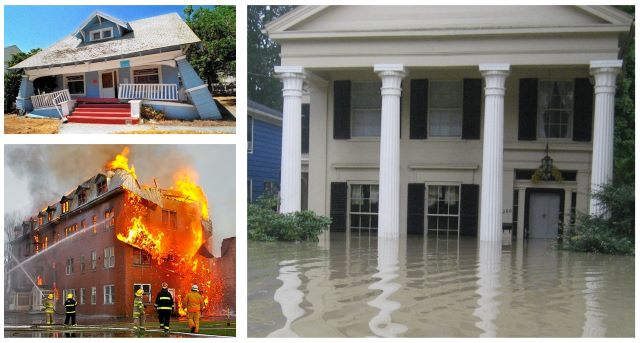 The destructive impact of natural disasters underscores the critical need to implement disaster preparedness strategies to preserve vulnerable historic buildings and archeological sites. Without established plans for disaster preparedness, emergency response, and recovery, all historic and cultural resources are at risk.
The destructive impact of natural disasters underscores the critical need to implement disaster preparedness strategies to preserve vulnerable historic buildings and archeological sites. Without established plans for disaster preparedness, emergency response, and recovery, all historic and cultural resources are at risk.
In the event of a disaster, the Office of Historic Preservation (OHP) is prepared to provide assistance and updated information to assist disaster responders, local officials, owners, and the public on historic property damage issues as a result of a disaster.
In addition, the OHP may also be able provide experts to assist in the post-disaster assessment of damaged historic sites, including archeological sites, for counties, cities, and tribes. To further assist damaged resources, the OHP also will coordinate with its Preservation Partners to provide education, outreach and technical assistance to the extent possible.
Role of the Office of Historic Preservation in Disasters
Disaster Preparedness Planning: What to Do Before Disaster Strikes
Disaster Response: What to Do After Disaster Strikes
Disaster Recovery: What to Do in the Recovery Phase
Agency Resources & Links
FREQUENTLY ASKED QUESTIONS & ANSWERS
What is the definition of an historic property?
What can I do to protect my property from threats of disasters?
What assistance is available for historic property owners in case of a disaster?
Are there incentives for historic properties?
What can be done to protect a community’s historic properties from threats of disasters?
What constitutes an imminent threat (CHBC)?
What constitutes an immediate threat (FEMA)?
How can I contact FEMA (Federal Emergency Management Administration) or or OES? (California Governor's Office of Emergency Services)
How can I contact the the SBA? (Small Business Administration)
HISTORIC PROPERTY REVIEW
Federal and federally-sponsored programs and projects are reviewed pursuant to Section 106 and 110 of the National Historic Preservation Act (NHPA). Section 106 requires federal agencies to consider the effects of proposed federal undertakings on historic properties and require federal agencies (and their designees, permittees, licensees, or grantees) to initiate consultation with the State Historic Preservation Officer (SHPO) as part of the Section 106 review process.
State programs and projects are reviewed pursuant to Statute 5024 and 5024.5 of the California Public Resources Code. Additionally, Section 5024 requires consultation with OHP when a project may impact historical resources located on State-owned land.
Structures listed on the National Register of Historic Places, the California Register of Historic Places, or on any local public register of historic places damaged due to a natural disaster are reviewed pursuant to Public Resources Code Section 5028. This statute outlines provisions for protection, OHP determinations, and local government consultation on the damaged property.
When a proposed project may adversely affect a historic resource, the California Environmental Quality Act (CEQA) requires the Lead Agency to carefully consider the possible impacts before proceeding.
